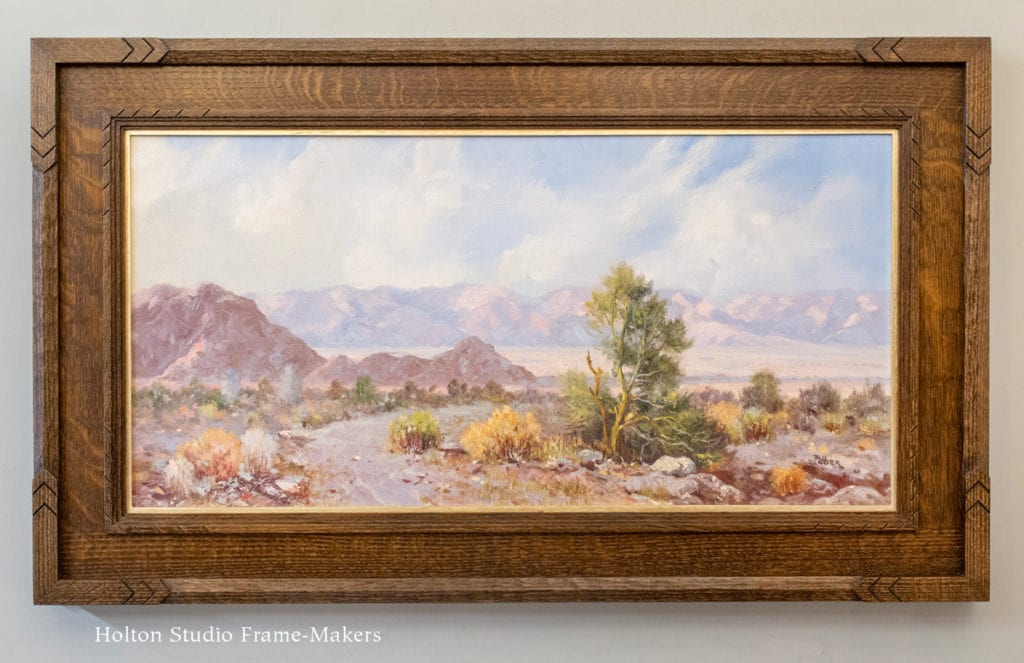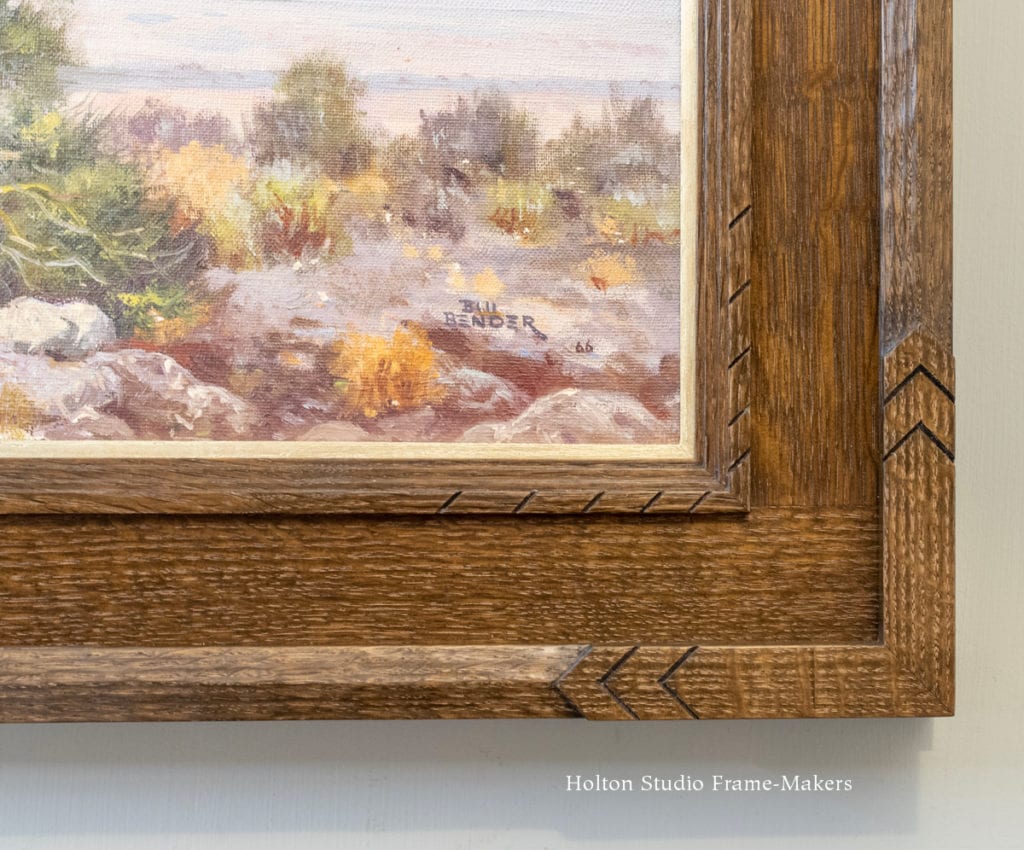Two paintings by the notable California landscape and genre painter Bill Bender (1919-2016) recently came to us from a collector with a deep love of California’s deserts, and thus a great appreciation for this particular painter’s affinity for the desert landscape. Both paintings were ill-served by the frames they were in. So looking at them before and after re-framing offers a good opportunity to compare the effect of typically shoddy ’60’s frames to thoughtfully designed and well-made solid hardwood settings.
This first piece, “Day’s End,” 1966 (oil on canvas, 15″ x 30″), is in a 3-3/4″ carved cassetta in quartersawn white oak (light Medieval Oak stain) with a pale gold slip. Trevor Davis made the frame and had a hand in the design of the carving pattern on the corners of the inner molding. The outer cap molding has a carved peak (to echo the terrrain in the painting) running between the flat, chevron-carved corners. (See corner detail below.) Compare to the old frame shown at right.
The second painting, which came to us as shown at right, in a cheap gold frame, is an undated 12″ x 16″ oil on board. The 3″ frame Eric Johnson made to replace it has carved outer and sight edges, to go with the rough rocks as well as loose brushwork, combined with an overall swooping form to echo the road and sustain the perspective it creates. This frame too is quartersawn oak, but with Weathered Oak stain a little cooler than the frame above. It too has a pale gold slip.
About Bill Bender
Peggy and Harold Samuels’s Encyclopedia of Artists of the American West includes this colorful description of the artist (but was written before Bender’s death, at age 97, in 2016):
A working cowboy who moonlighted as a stunt man, Bill Bender turned to writing, painting, and illustrating stories when he was recovering from an injury that occurred when he was rodeo riding. Of his rodeoing, he said: “I just rode for the hell of it, on Fourth of July, Labor Day, or some other blow out. The money ain’t big but it gave us a chance to head for town, whoop it up, and swap lies with old friends.”
He lives in Oro Grande, California, and sometimes accompanied artist/illustrator James Swinnerton on painting trips. Swinnerton advised him to “learn the colors of the desert first” and then paint horses later. Bender followed this advice, becoming known for his desert landscapes as well as horses, cattle, and ranch scenes. He also became a civilian artist for the Air Force and Navy in the 1960s.
« Back to Blog





